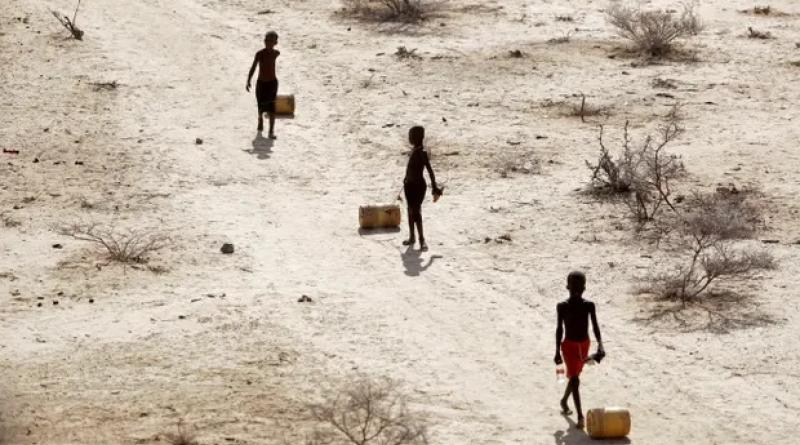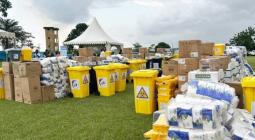Earth’s health failing in seven out of eight key measures, say scientists

Human activity has pushed the world into the danger zone in seven out of eight newly demarcated indicators of planetary safety and justice, according to a groundbreaking analysis of the Earth’s wellbeing.
Going beyond climate disruption, the report by the Earth Commission group of scientists presents disturbing evidence that our planet faces growing crises of water availability, nutrient loading, ecosystem maintenance and aerosol pollution. These pose threats to the stability of life-support systems and worsen social equality.
The study, which was published in Nature on Wednesday, is the most ambitious attempt yet to combine vital signs of planetary health with indicators of human welfare.
Prof Johan Rockström, one of the lead authors, said: “It is an attempt to do an interdisciplinary science assessment of the entire people-planet system, which is something we must do given the risks we face.
“We have reached what I call a saturation point where we hit the ceiling of the biophysical capacity of the Earth system to remain in its stable state. We are approaching tipping points, we are seeing more and more permanent damage of life-support systems at the global scale.”
The Earth Commission, which was established by dozens of the world’s leading research institutions, wants the analysis to form the scientific backbone of the next generation of sustainability targets and practices, which extend beyond the current focus on climate to include other indices and environmental justice. It hopes that cities and businesses will adopt the targets as a way to measure the impact of their activities.
The study sets out a series of “safe and just” benchmarks for the planet that can be compared to the vital signs for the human body. Instead of pulse, temperature and blood pressure, it looks at indicators such as water flow, phosphorus use and land conversion.
The boundaries are based on a synthesis of previous studies by universities and UN science groups, such as the Intergovernmental Panel on Climate Change and the Intergovernmental Science-Policy Platform on Biodiversity and Ecosystem Services.
The situation is grave in almost every category. Setting global benchmarks is challenging. For climate, the world has already adopted a target to keep global heating as low as possible between 1.5C to 2C above pre-industrial levels. The Earth Commission notes that this is a dangerous level because many people are already badly affected by the extreme heat, droughts and floods that come with the current level of about 1.2C. They say a safe and just climate target is 1C, which would require a massive effort to draw carbon dioxide from the atmosphere. They note it is impossible to stabilise the climate without protecting ecosystems.
To achieve this, the “safe and just” boundary is for 50to 60% of the world to be home to predominantly natural ecosystems. The reality, however, is that only 45to 50% of the planet has an intact ecosystem. In human-altered areas, such as farms, cities and industrial parks, the commission says at least 20 to 25% of the land needs to be devoted to semi-natural habitats such as parks, allotments and clusters of trees in order to maintain ecosystem services such as pollination, water quality regulation, pest and disease control, and the health and mental health benefits provided by access to nature. However, about two-thirds of altered landscapes fail to meet this goal.
Another target is for aerosol pollution, which accumulates from car exhausts, factories, and coal, oil and gas power plants. At a global level, the report has focussed on minimising the imbalance of aerosol concentrations between the northern and southern hemispheres, which can disrupt the monsoon season and other weather patterns. At a local level, for example in cities, it follows the World Health Organization in establishing a boundary of 15 micrograms per cubic metre mean annual exposure to small particulate matter, known as PM2.5, which can damage the lungs and heart. This is an issue of social justice because poorer, often predominantly black communities tend to suffer the worst results as many are found in vulnerable areas.
The benchmark for surface water is that no more than 20% of the flow of rivers and streams should be blocked in any catchment area because this leads to declining water quality and habit loss for freshwater species. This “safe boundary” has already been exceeded on a third of the world’s land by hydroelectric dams, drainage systems and construction. The story is similarly poor for groundwater systems, where the safe boundary is that aquifers are not depleted faster than they can be replenished. However, 47% of the world’s river basins are being run down at an alarming rate. This is a big problem in population centres such as Mexico City and areas of intensive agricultural such as the North China Plain
Nutrients are another area of concern because farmers in wealthier countries are spraying more nitrogen and phosphorus than the plants and land are able to absorb. This temporarily increases yields, but leads to runoffs into water systems that become suffocated by algae blooms and unhealthy for humans to drink. Global equity is the key here, the report says. Poorer nations need more fertilisers, while rich nations need to cut the surplus. Balanced out, the “safe and just boundary” in this case is a global surplus of 61m tonnes of nitrogen and about 6m tonnes of phosphorus.
The authors say the planetary diagnosis is grim but not yet beyond hope, though the time for a remedy is running out.
Joyeeta Gupta, the Earth Commission co-chair and professor of environment and development in the global south at the University of Amsterdam, said: “Our doctor would say the Earth is really quite sick right now in many areas. And this is affecting the people living on Earth. We must not just address symptoms, but also the causes.”
David Obura, another member of the commission and director of coastal oceans research and development in the Indian Ocean, said the policy framework was already in place to get back within safe boundaries through the goals of existing UN climate and biodiversity agreements. But he stressed that consumption choices also needed to play an important role.
“There are a number of medicines we can take, but we also need lifestyle changes – less meat, more water, and a more balanced diet,” he said. “It is possible to do it. Nature’s regenerative powers are robust … but we need a lot more commitment.”
cover photo:Water flow is one of eight indicators of global health used in the analysis. Photograph: Brian Inganga/AP





